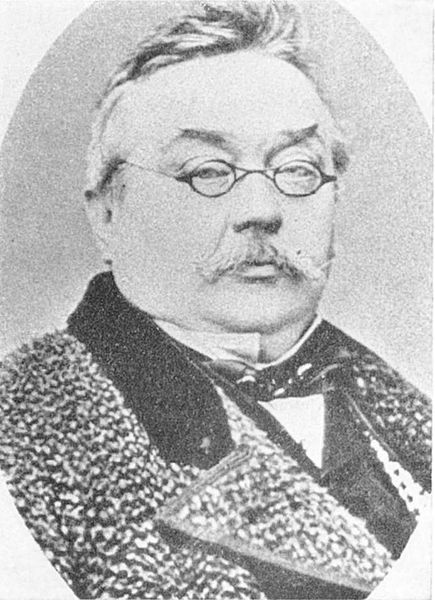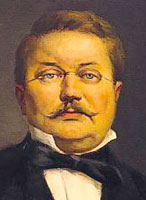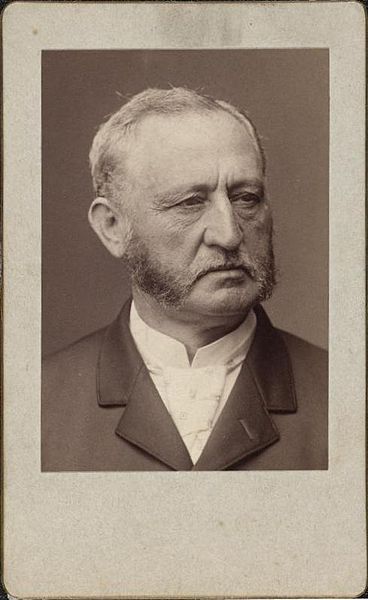<Back to Index>
- Dermatologist Ferdinand Ritter von Hebra, 1816
- Dermatologist Isidor Neumann, Edler von Heilwart, 1832
PAGE SPONSOR


Ferdinand Ritter von Hebra (Ferdinand Karl Franz Schwarzmann [Hebra]) was an Austrian physician and dermatologist (7 September 1816, in Brno, Moravia – 5 August 1880 in Vienna, Austria-Hungary). He is known as the founder of the New Vienna School of Dermatology, an important group of physicians who set the basis for modern dermatology.
Ferdinand von Hebra graduated in medicine in 1841 at the University of Vienna. He was influenced by Carl Freiherr von Rokitansky, one of the founders of modern pathological anatomy.
Ferdinand von Hebra wrote one of the most influential books on dermatology of all times, the Atlas der Hautkrankeiten (Atlas of skin diseases), with phenomenal illustrations by two of the leading medical illustrators of Austria, Anton Elfinger (1821 - 1864) and Carl Heitzmann (1836 - 1896).
In 1844 Ferdinand von Hebra discovered the cause of scabies.
On July 30, 1865, von Hebra lured his colleague, Ignaz
Semmelweis, under the pretense of visiting one of Hebra's
"new Institutes", to a Viennese insane asylum located in
Lazarettgasse (Landes - Irren - Anstalt in der
Lazarettgasse). As a physician, Semmelweis had
unsuccessfully argued for years in favor of antiseptic
procedures. Upon arrival at the insane asylum, Semmelweis
was beaten and died two weeks later from a gangrenous
wound, possibly caused by the beating.

Isidor Neumann, Edler von Heilwart (March 2, 1832, Mißlitz, Moravia – August 31, 1906) was an Austrian dermatologist.
He was a student at the so-called Vienna School of Dermatology under Ferdinand Ritter von Hebra (1816 – 1880), earning his doctorate in 1858. In 1863 he received his habilitation, and in 1873 became an associate professor. In 1881 he was appointed professor of dermatology and successor to Carl Ludwig Sigmund (1810 – 1883) as director of the clinic for syphilis.
In an 1886 publication of Vierteljahrsschrift für Dermatologie und Syphilis, he described a type of pemphigus vulgaris, which later became known as Pemphigus vegetans of Neumann. He was also the first to publish a detailed study (Über die senilen Veränderungen der Haut des Menschen) of prematurely aged skin caused by overexposure to weather conditions. However it wasn't until several years later that Paul Gerson Unna gave it a name, calling it seemannshaut or "sailors' skin".
During the Austrian government's occupation of Bosnia - Herzegovina, Neumann was sent to the country to manage the public health problem of syphilis and leprosy.